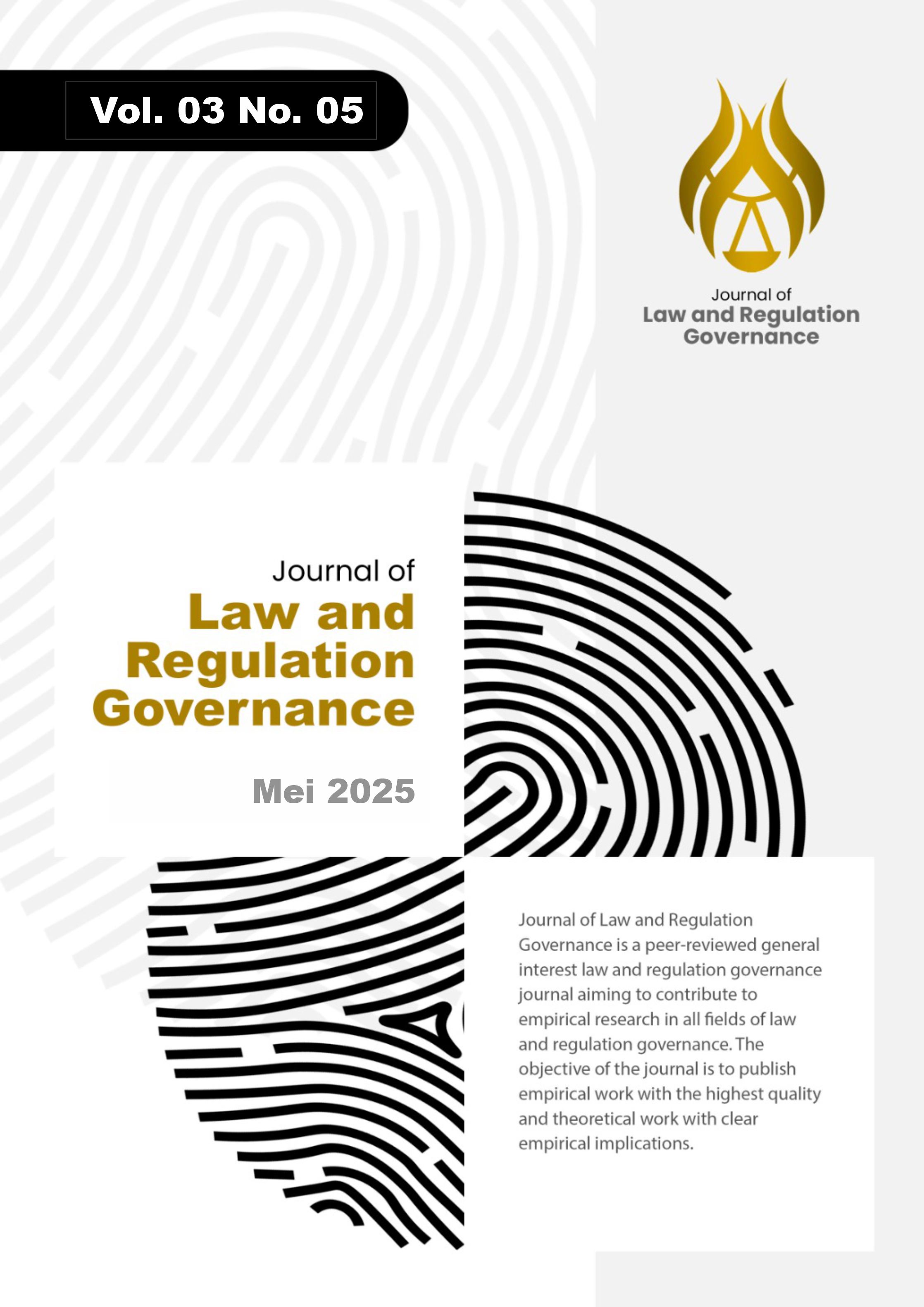Implementing Environmental Law for Sustainable Development
DOI:
https://doi.org/10.57185/jlarg.v3i5.110Keywords:
environmental law, sustainable development, legal enforcement, multistakeholder engagement, policy implementation, governance structuresAbstract
This study examined the persistent gap between policy directives and real-world outcomes in implementing environmental law for sustainable development. Despite an increasing global focus on issues such as climate change, biodiversity loss, and pollution, many jurisdictions struggle to enact legislation effectively. The primary aim was to identify key barriers to enforcement such as fragmented regulatory frameworks, insufficient resources, and limited technical expertise and to highlight best practices that can drive successful legal execution. Employing a legal (yuridis) research approach, the study involved a thorough content analysis of statutes, policy documents, and judicial decisions, complemented by semi-structured interviews with legal experts. The findings underscore that consolidated legal instruments, interagency collaboration, and the adoption of innovative enforcement measures (e.g., digital licensing systems and specialized environmental courts) significantly improve compliance rates. Moreover, multistakeholder engagement, encompassing government bodies, NGOs, private entities, and local communities, emerges as a critical factor in bridging resource gaps and reinforcing accountability. The study concludes that a holistic approach integrating coherent legal frameworks, robust enforcement mechanisms, and inclusive governance structures offers the most effective pathway toward achieving sustainable development objectives.








